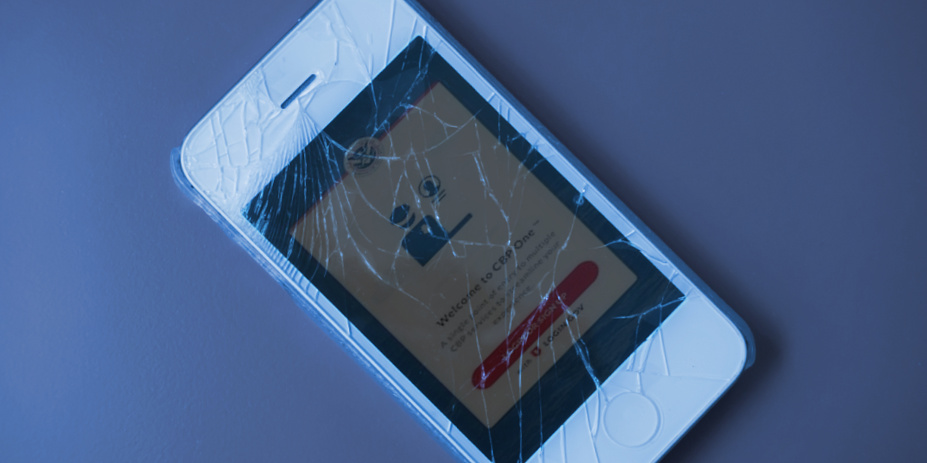In January and February of this year, the Biden administration announced new policies to process individuals seeking asylum at ports of entry at the U.S.-Mexico border. A key component of these new policies is the increased use of the CBP One app. CBP One allows certain people to submit their biographic information to U.S. Customs and Border Protection (CBP) before arriving at ports of entry.
The government requires Cubans, Haitians, Nicaraguans, and Venezuelans applying for advance travel authorization to come to the United States and seek humanitarian parole to use CBP One. The app also is the main method by which people seeking to enter the United States under an exemption to Title 42—the law that has been used by the government to expel potential asylum-seekers—can submit their information and make appointments at ports of entry.
This month, the Biden administration published a proposed rule that makes CBP One a necessity for those seeking asylum after Title 42 restrictions are lifted. If the rule goes into effect, asylum seekers who traveled to the United States and passed through a third country—like Mexico or Guatemala—but did not seek protection in such third country must use CBP One and make an appointment for processing at ports of entry to remain eligible for asylum.
But while the app has the potential to make border processing more efficient, the recent expansion of CBP One’s functions has been riddled with problems. The app’s flaws, coupled with the lack of access to appointments, are preventing many people from successfully entering the United States to seek protection.
Issues with Capturing Photos
One of the main issues reported by CBP One users is that the app’s expanded photo function disproportionately rejects people with darker skin tones. One of the first steps applicants must take to submit their information is to take a selfie using CBP One. As described in the U.S. Department of Homeland Security’s (DHS) Privacy Impact Assessment—one of the only government documents with a detailed description of CBP One’s functionality—CBP officers at the port of entry will take a new photo of the traveler, which is then searched against photos in a database. Media reports indicate that CBP One has trouble capturing the photos of people with darker skin tones at the first step.
Some asylum seekers using CBP One also have been unable to schedule appointments at ports of entry due to the limited availability of appointments. Repeated rejections of photos can lead to applicants’ delay in submitting the required information, which contributes to an inability to obtain appointments. This flaw in the system has the effect of shutting some people out of the asylum process altogether.
Inherent Issues with Accessing Humanitarian Processes Through an App
The agency’s plan to make access to humanitarian programs for vulnerable populations contingent on people’s use of CBP One had flaws from its inception. CBP One relies on people having strong mobile connectivity to download the app. This is a problem for individuals who need to download the app in Mexico in order to apply for Title 42 exemptions and for individuals in Cuba, Haiti, Nicaragua, and Venezuela who intend to apply for humanitarian parole programs. Users report it is difficult to stay connected to the internet for long enough to enter information for the main travelers and their family members.
CBP also assumes that travelers with limited financial resources would be able to obtain a phone that would allow them to download and use the app.
Finally, navigating CBP One requires a certain level of tech-savviness that some asylum seekers lack. For example, the app requires users to first create an account with Login.gov, a website that provides access to certain government agencies’ function. The app also requires two-step authentication to sign in once an account has been created.
Systemic Failures Prohibit People From Completing CBP One Functions
Others have reported that CBP One users often get error messages while using the app that prohibits them from successfully entering their information.
These errors, coupled with the requirements for users to understand how to access the app, further limit those who can use CBP One.
Agency documents released by CBP in response to a FOIA lawsuit revealed that it is expanding CBP One’s functions with little transparency. Documents show that CBP One was not created for the processing of asylum seekers, but within months after unveiling the app, CBP added features to it for this purpose. It is unclear whether CBP considered whether the technology used in the app could disproportionately shut out racial minorities or would create the current accessibility issues users face.
CBP needs to fix these issues in order to increase access to the app for individuals who are eligible to enter the United States through certain programs. If the app isn’t accessible to certain individuals, CBP must provide other methods for processing and widely publicize these alternatives. Further, the agency must ensure that potential users have information well in advance of when functions are rolled out so that people know how to access these capabilities. Thus far, CBP’s efforts to advise potential CBP One users have been insufficient.
Making border processing for individuals seeking asylum more efficient—especially if it reduces the time people are detained—is a worthy goal, and technology is crucial to success. However, the technology must work properly. CBP One has a long way to go toward meeting that goal.
FILED UNDER: CBP One Risks, Customs and Border Protection


